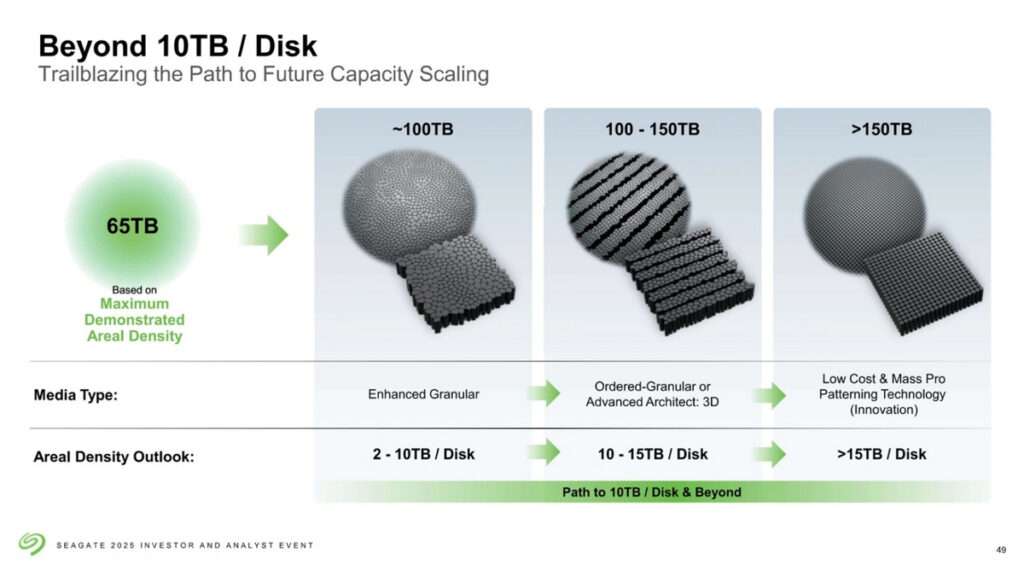For years, the idea of petabyte-sized hard drives felt distant. Now, Seagate says it’s closer than ever. In recent lab tests, the company managed to more than double the data density of its newest HDD designs, hinting at a future where storing hundreds of terabytes on a single drive becomes routine.
Seagate’s progress is tied to the adoption of Heat-Assisted Magnetic Recording. In a recent presentation at a CMSM seminar in Japan, the company reported achieving 6.9 TB per platter using the new method. For comparison, the first commercial HAMR drives released earlier this year offered roughly 3 TB per platter.

Seagate says the latest lab milestone is only the first step. The company laid out a forward roadmap showing simulated results of 8 TB per platter and a target of 10 TB as it refines HAMR technology. To reach those levels, Seagate is developing new storage architectures, improved read-head systems, and even considering an alternative approach known as ferroelectric recording.
Roadmap to Petabytes
Seagate’s confidence is reflected in its published roadmap. The company intends to move toward a 7 TB-per-platter design for future large-scale HDDs, with releases expected in the coming decade. In the long term, Seagate believes ongoing advances in recording technology could enable capacities of 15 TB per platter or higher.

For customers, these gains could mean single hard drives with capacities measured in the hundreds of terabytes. If Seagate stays on track with its research milestones, multi-petabyte HDDs may eventually enter the market. The company is already targeting a 100 TB model by 2030, technology that will be essential as AI workloads and enterprise data demands continue to surge.
But massive capacity doesn’t automatically mean smooth performance. A multi-petabyte drive on a basic SATA port would be painfully slow, bogged down by the interface rather than the hardware. Seagate is well aware of that challenge and says it’s already exploring new technologies to prevent those bottlenecks before these drives reach the market.
Following its milestone as the first vendor to ship HAMR-enabled HDDs, Seagate is accelerating its research and development efforts. The newest data points reinforce a broader trend: mechanical storage isn’t nearing its end. Instead, with HAMR scaling, it’s positioned for a capacity-driven renaissance that complements solid-state technology rather than competes with it.
Maybe you would like other interesting articles?

